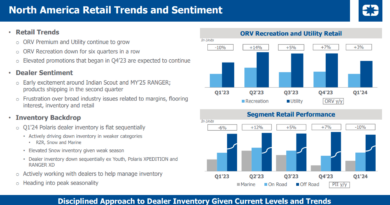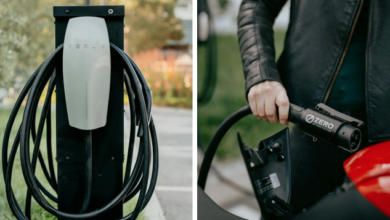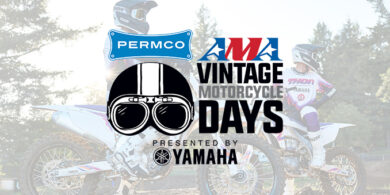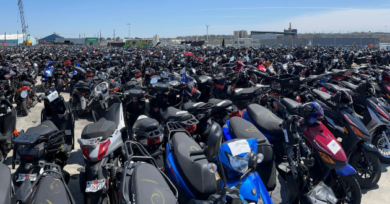Bondy shares outlook for KYMCO USA
Former Arctic Cat Manager Eric Bondy took the reigns as president and CEO of KYMCO USA early last year, assuming day-to-day responsibility for all operational aspects at the importer. Bondy spent the past nine years in various positions at Arctic Cat, Inc., in Thief River Falls, Minn. He left as marketing services manager, working with outside vendors and assisting with the manufacturer’s system-wide computer project.
Powersports Business recently talked with Bondy to learn more about KYMCO USA’s current business and future in the U.S. powersports industry. Appearing below, the interview was edited for brevity and clarity.
Powersports Business: In the world of powersports OEMs, what is KYMCO?
Eric Bondy: I really consider KYMCO to be a world-class manufacturer of scooters and ATVs. The reason I say that they’re a world-class manufacturer is that they’ve been around since 1963 and have been doing what they do for a very long time. I think they achieved a very strong presence, particularly with their scooters. With ATVs, while they haven’t been in the market that long, they’ve certainly penetrated the European market at a very high rate. In the U.S. market, that product is not so well known, mostly because we’ve only been bringing quads into the market since 2003 and so the brand awareness isn’t nearly as high.
PSB: Describe KYMCO USA.
EB: KYMCO USA is KYMCO’s U.S. distribution partner. KYMCO USA is a daughter company of STR, Inc., which is an importer-exporter dealing primarily in offshore sales. They actually own several companies and deal in bananas, coffee and steel. The owner of STR is Stanislav Razen.
PSB: Since KYMCO USA is not owned by Kwang Yang, describe how the relationship between the two business entities functions.
PSB: How does Kwang Yang’s business differ from Arctic Cat’s?
EB: It’s actually a very similar business model, the only difference being that the manufacturing takes place overseas versus Arctic Cat’s being in Minnesota.
PSB: What has happened at KYMCO USA since you joined the company?
EB: We’ve basically restructured the entire company, from internal senior management all the way through to our customer service team. We use to work through outside independent sales reps and we’ve converted a large number of those into employees and continued to hire employee sales staff in the field. Right now we’re at 12 reps and growing rapidly.
PSB: Describe KYMCO USA’s business in 2005.
EB: Another record year. Sales were in strong double digits, and we saw substantial dealer network growth, both in quality and quantity of our dealer network. We saw increases really in all aspects of our business, from scooter sales to ATV sales to parts and accessories sales.
PSB: What would Kwang Yang and KYMCO USA like to see from the KYMCO brand in the United States?
EB: I think our plan is to continue the strategy we have, and that is to recruit high quality dealers and continue to grow our dealer network, introduce new product, both in the two-wheel and four-wheel markets, and basically continue the steady growth we’ve been experiencing. We’re not going to make huge strides in the market place — we’re a very small fish in a very large ocean — so we’ll continue to make small, important steps to grow our brand.
PSB: What is your No. 1 barrier to growth?
EB: Because we’re such a small company in the U.S., it has to be brand awareness.
PSB: In 2005, KYMCO popped up on Good Morning America and Speed Channel’s Two Wheel Tuesday. What does the KYMCO brand need to further expand its exposure/sales/market share in North America?
EB: I think continued presence in enthusiast publications, and continued presence in the market. Frankly, I think we’ve done a pretty good job at growing our dealer brand awareness, and so now we’ll also be focusing on consumer brand awareness and consumer information.
PSB: What is KYMCO USA’s advertising/marketing plan for 2006? Where will consumers see the brand? How will you attempt to create awareness?
EB: We’ll continue our presence in the core publications. Fortunately, in scooters it’s easy to reach our core market — they’re a niche group and very enthusiastic about the product. We’re also going to be doing some things with ABC Family Channel and continue to increase our advertising presence in some of the nontraditional areas — collegiate advertising for scooters and outdoor publications for the ATVs.
PSB: Are you taking part in the Advanstar-sponsored International Motorcycle Shows (IMS)?
EB: We were in IMS several years ago to evaluate it. It’s more for motorcycles than it is for ATVs. The companies that offer ATVs certainly display them, but I think the core enthusiasts who attend are primarily motorcycle driven. At this point, I think our advertising dollars could be more resourcefully spent, but it may be something we’ll reconsider in the future.
PSB: KYMCO USA currently offers the 250cc Venox motorcycle. Any thoughts to entering the motorcycle market more seriously?
EB: There’s always discussions, and I think KYMCO as a progressive company is always looking at any options in the U.S. that can be profitable. The motorcycle market is very, very competitive, so I don’t see anything in the immediate short-term for us.
PSB: Why isn’t KYMCO USA a Motorcycle Industry Council (MIC) reporting member?
EB: The primary reason is resources. However, it may be something we’ll look to do in the relative near future because we do believe we would get some benefit out of being a reporting member. MIC requires data to be communicated to them in a specific method. Frankly, as a smaller company, it’s a resource issue — we just haven’t had the resources to extract the data and put it into the type of format the MIC needs to have. As an example, at Arctic Cat, we had someone who did that work full time. It was her primary job.
PSB: The Taiwanese make great effort to separate themselves from the Chinese. Why? What are your thoughts on the influx of Chinese product to the market? What is it doing to the market?
EB: I think the Taiwanese make a great effort to separate because they believe there’s a wide quality difference. They truly believe that Taiwanese product is significantly higher quality than Chinese product. And, for the most part, I think people in the industry here in the U.S. have experienced that to be true.
We’ve seen some horrendous incidences of poor quality of Chinese product that has come into the U.S. Frankly, I think it’s dangerous trend. It’s dangerous to the industry because it’s all price driven. Price is the easiest thing for consumers and for dealers to gravitate to. But, when there’s not support there, from a parts standpoint, from a warranty standpoint, and from a product liability standpoint, there’s a tremendous danger that there will be negative effects not only on those dealing in the product but to the industry as a whole.
I think we’re in an area where you really have to know who it is you’re partnering with. It’s not enough to bring in some low-price product to turn a fast buck then hope it goes away. That’s really not a very good business model.
PSB: What do dealers say they look for from KYMCO USA?
EB: I think dealers are looking for quality product and support after the sale. Do we have parts support? Do we have warranty support? Are we going to be there when the dealership needs to help that consumer? As far as building this business in the U.S., I think we’ve done it right. We’ve built the infrastructure to be able to support the dealer network, and now we’re just recruiting and trying to work with good quality dealers.
PSB: What do you look for in a dealer?
EB: First and foremost, it’s a passion for the business. Also, the dealers we’re looking for need to understand that while it’s fun to be in the powersports business, this is truly a business and they need to run it so that they’re able to make some money and keep themselves going during possible lean times.
PSB: How do you work with dealers?
EB: We’re working with a company right now on developing a KYMCO University, if you will — online training that would help dealers educate themselves not only on our features and benefits but on the technical aspects of our products as well as how to best do business with our company.
PSB: PG&A situation. I know KYMCO has a full line of branded gear in Asia. Any thoughts to offering more in the U.S.?
EB: We’re partnering with some U.S. companies including Cycle Country, who makes some accessories for our ATVs now.
PSB: Do you plan to attend the Dealer Expo with a certain goal? What is the main message you hope to convey to KYMCO visitors there?
EB: We’re looking really for dealers who want to partner with us and who have the same expectations we do. Dealers who aren’t looking for a short-term deal, but who want to grow and nurture a relationship as long-term partners. psb




